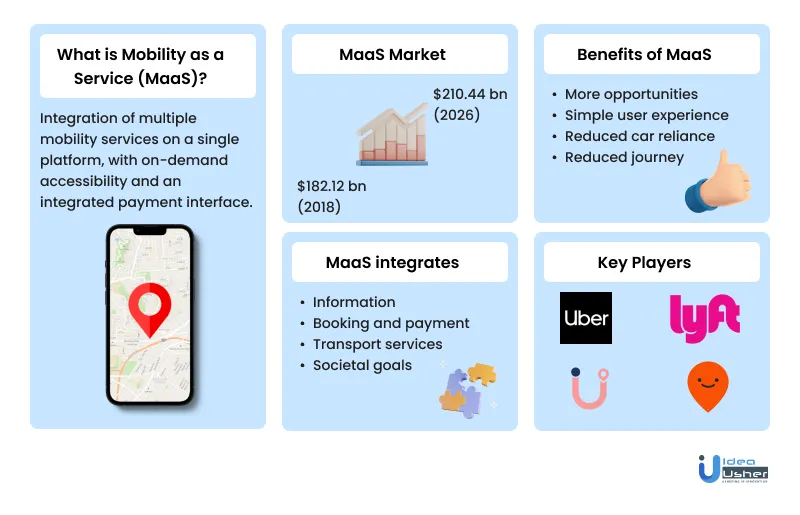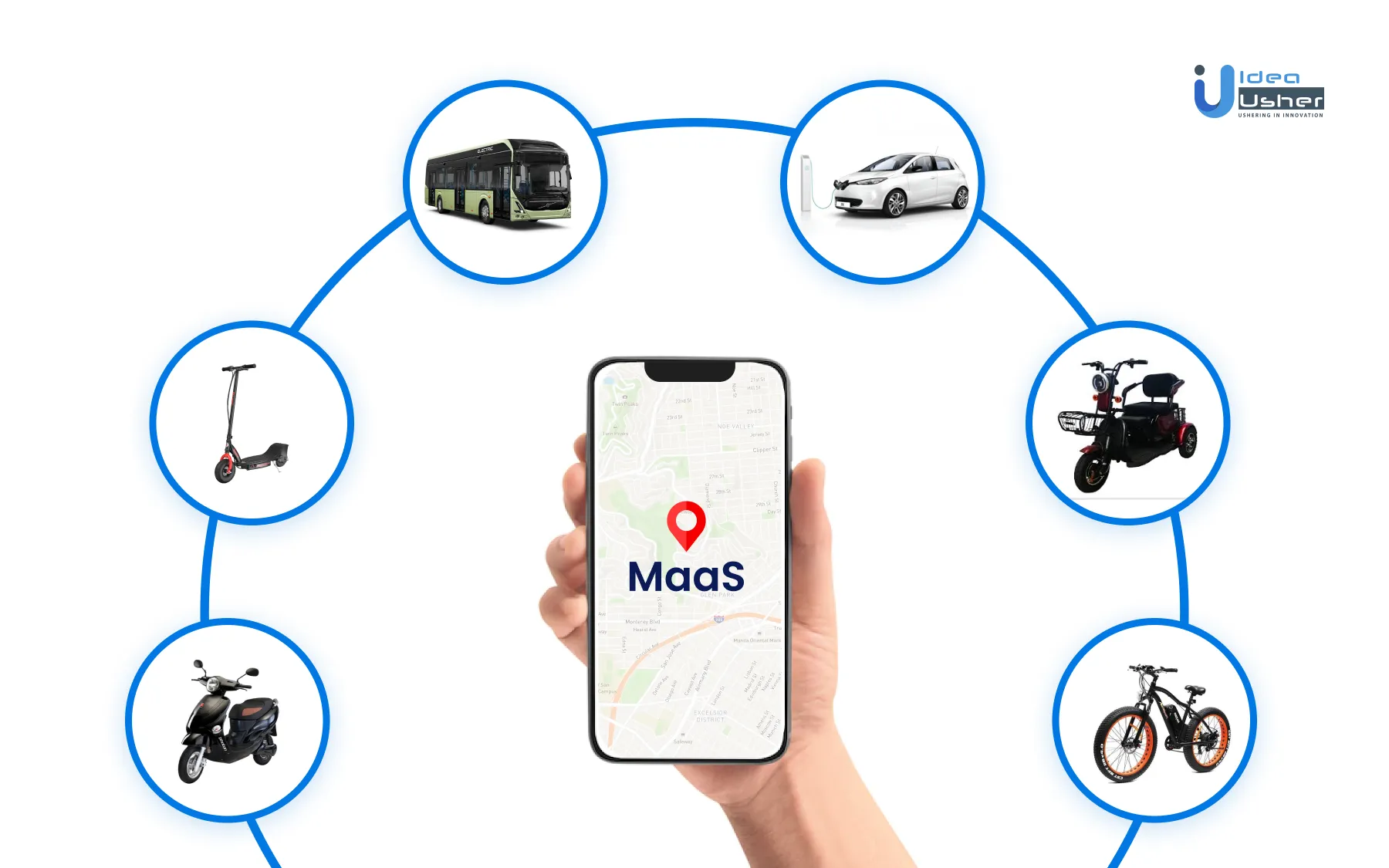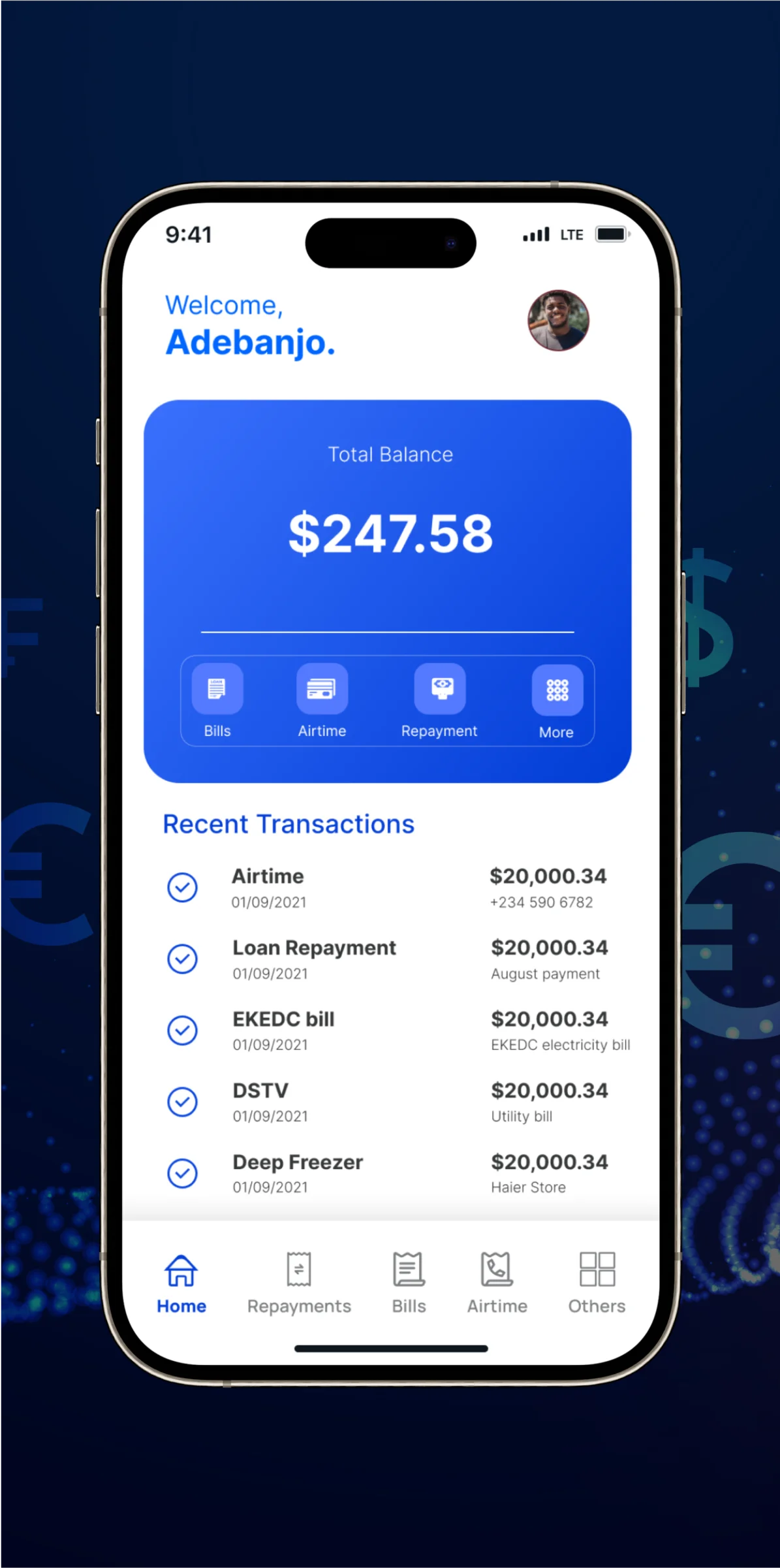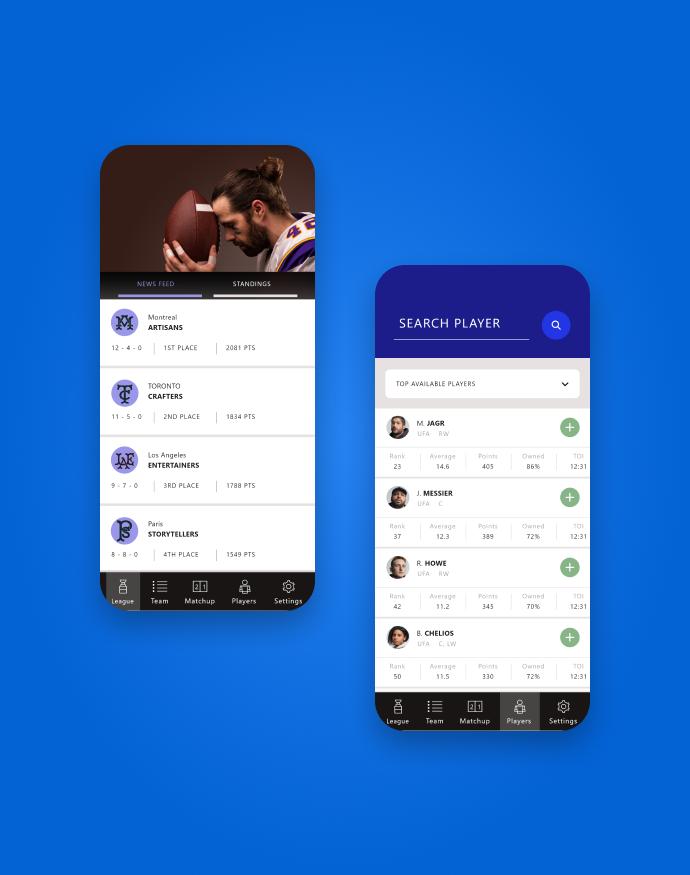Today, on-demand apps are increasingly gaining traction. These apps have made it easier and convenient to access everyday services like entertainment, shopping, travel, etc. Transportation is a new addition to this spectrum, with ‘Mobility as a Service (MaaS)’ becoming common. The MaaS business model is a new way of thinking about mobility. It’s not just about the car anymore. It’s about mobility as a service, which includes cars, buses, trains, bikes, and more.
This blog discusses the MaaS business model in detail and explores its several related aspects.
What is the MaaS business model?

A MaaS business model is one where a company provides various transportation services to its customers. Mobility as a service is an emerging concept in the automotive industry, and it is a new way of thinking about car ownership and usage.
Mobility as a Service integrates various transport modes and related services into a single comprehensive on-demand digital platform. It offers users a one-stop destination for accessing several transport modes like bus, train, metro, taxi, bike-sharing, etc. It also provides a platform for payment, ticketing, accessing information, etc.
The MaaS market is expected to grow from USD 182.12 billion in 2018 to USD 210.44 billion in 2026, growing at a CAGR of 1.9% during the forecast period.
Fortune Business Insights
What does the MaaS business model integrate?
Integration is at the core of the MaaS business model, and MaaS cannot be discussed in isolation from the integration functionality.
A MaaS platform has an integration topology with four distinct levels and a basic level with no integration. These levels are discussed below:
Level 0: No integration
This introductory level provides different services for different modes of transport, with no integration.
Level 1: Information integration
This level integrates information related to travel planners, routes, costs, etc. This level’s added value is the facilitation of decision-making regarding the best trip, transport modes, etc.
Level 2: Booking and payment integration
Level 2 provides single trip services by facilitating public transport ticketing for the taxi, bus, and other transport modes. This level’s added value is that it allows the users to find, book, and pay for the services on a single platform.
Level 3: Transport services integration in passes and bundles
This level provides a comprehensive alternative to car ownership by fulfilling users’ complete mobility needs. For the transport service providers, it attracts customers they cannot reach as single services.
Level 4: Societal goals integration
In addition to the above features, this level focuses on societal objectives like reducing private car ownership and use, thus promoting a more accessible and liveable city.
Advantages of MaaS business model
The MaaS business model is beneficial for all the stakeholders; the individuals, the organizations, and the society. Some of the benefits are as follows:
1. Higher vehicle utilization
MaaS helps to reduce the number of vehicles on the roads. With more private car ownership and lesser travel, the majority of the cars remain unutilized. MaaS solves this problem by putting idle vehicles to use, thus reducing the number of cars in circulation and the amount of valuable space allocated to parking.
2. Simple, intuitive user experience
MaaS provides the users with a simple and intuitive experience to access mobility services. With multiple services integrated into a single platform, MaaS provides ease, flexibility, and convenience to the users to fulfill their transportation needs.
3. Reduced journey time
Lesser vehicles on roads would lead to lesser traffic. The journey time would reduce significantly, making the commute faster. Reduction in journey time also leads to lesser fuel consumption.
4. Increased productivity
When people do not have to spend a significant chunk of their routines traveling, they can utilize the same to work on more productive things. MaaS allows users to increase their productivity by solving their mobility problems.
5. Reduced cost per user
The costs of owning a car include car registration, loan, servicing, insurance, etc., which add up and turn out to be very high. On the contrary, using MaaS allows the users to significantly reduce their transportation costs by availing of public transport services like buses, taxis, or even vehicle renting and sharing services like e-scooter sharing.
How to implement MaaS into your business?
MaaS is not only helpful for individuals, but businesses can also take advantage of this service. Many business organizations use MaaS to significantly lower their transportation costs and increase the productivity of their workforce.

If you’re a business owner, you must follow these steps to successfully implement MaaS into your business.
1. Identify if the business is ready
Before implementing MaaS into your business operations, you must evaluate whether your business will benefit from the integration. An ideal way to perform this evaluation is to compare the current travel costs with the costs incurred using MaaS. This comparison would enable you to decide which approach is cost-effective and whether a complete shift in the travel model is worth it.
Alternatively, you can identify departments that would benefit from MaaS and transition only those departments. You also need to consider the micro-expenses incurred on travel for comparison.
2. Devise a transition plan
The method of transition from conventional transit models to MaaS is worth giving a deep thought. A sudden and complete shift may be difficult and cause more harm than good. Hence, it would be best if you devised a proper transition plan.
A gradual shift with periodic integrations should be preferred over a transition in one go. Gradual changes will make the process much smoother from a logistical and employee perspective.
You also need to carefully analyze the different MaaS options available in the market and choose the one that suits your requirements and budget.
3. Pilot Launch
You must perform a pilot test of ‘Mobility as a Service’ with a few employees before integrating it full-fledged into your business. Doing this allows you to look at the results without significantly impacting your business operations.
The pilot test also makes a section of employees get accustomed to the new transit model, and they can provide relevant feedback about the services. These employees can also train the other employees if and when the service gets implemented throughout the organization.
4. Launch
After the pilot test, you roll out ‘Mobility as a Service’ throughout the company. The previous steps make following this step easier. The pilot test ensures that the bugs and issues are resolved beforehand. You also have the opportunity to train your employees about the service and its usage.
5. Refinement
After a while since the integration of MaaS into your business, you will be able to get better insights into its performance. Accordingly, you can improve and make changes to the service so that the employees get the maximum benefits.
MaaS business model explained with examples
The MaaS business model has become quite popular, and many companies have already started this service. Given below are some famous companies who have succeeded in this business.
1. Uber
Uber is one of the leading MaaS platforms existing in the market. It provides its users with on-demand transportation services. It caters to a variety of users by giving different ride options, such as:
- UberX: Low-cost rides, all to yourself.
- UberX Share: Carpooling option with one co-rider.
- UberXL: Larger cars to accommodate more people.
- Bikes and scooters: Two-wheeler services for faster travel.
- Auto: Three-wheeler service for affordable travel.
| App Owner | Uber Technologies Inc. |
| Launch Year | 2009 |
| iOS Rating | 4.6/5 |
| Android Rating | 4.2/5 |
| Price | Free |
2. Lyft
Lyft is a MaaS provider that offers users ride-sharing, vehicle hiring, e-scooters sharing, cycle sharing, car rental, and food delivery services. An interesting thing to note here is that Lyft owns no vehicle. It receives commissions from the bookings, and the booking prices change dynamically based on the demand and supply of the service.
It is the second-largest MaaS platform in the US, after Uber.
| App Owner | Lyft Inc. |
| Launch Year | 2012 |
| iOS Rating | 4.9/5 |
| Android Rating | 3.9/5 |
| Price | Free |
3. Mobilleo
Mobilleo is an app that provides an end-to-end booking platform for business travelers. It allows the users to search and book flight tickets, hotel rooms, car rentals, taxis, trains, and more. Users can also create a door-to-door itinerary and book relevant services on the app. Travel documents storage, local attractions discovery, and expense tracking are some of the additional features of this app.
| App Owner | FOD Mobility Group Services Limited |
| Launch Year | 2016 |
| iOS Rating | 4.3/5 |
| Price | Free |
4. Moovit
Moovit is an Israel-based MaaS platform and a journey planner app. It offers an app to navigate public transit networks. It integrates several transit modes like buses, ferries, trains, trams, ride-hailing, shared bicycles, car sharing, etc. Users can access a live map to look for nearby stops and stations based on their GPS location.
| App Owner | Moovit App Global LTD |
| Launch Year | 2012 |
| iOS Rating | 4.7/5 |
| Android Rating | 4.5/5 |
| Price | Free with in-app purchases |
5. Whim
Whim is a MaaS app that allows users to plan, book, and pay for their trips using the app. The users get the freedom of mobility and access to various city transport services in one app. It allows the users to travel where, when, and how they want using public transport, trains, shared bikes, e-scooters, taxis, shared cars, rented cars, etc.
| App Owner | MaaS Global |
| Launch Year | 2017 |
| iOS Rating | 4.1/5 |
| Android Rating | 4.6/5 |
| Price | Free |
Final thoughts
Mobility as a service has added a new dimension to the transportation industry. The integration of technology with mobility has revolutionized transit. The rise of MaaS apps has made it easy and convenient for users to fulfill their daily transportation needs. With a growing demand for on-demand apps, MaaS will only grow in the years to come. The technology is constantly evolving, and it remains to be seen what new developments the mobility sector will see in the future.
If you wish to launch your own MaaS app, you can contact Idea Usher. Our experts provide customized app development services to suit your needs. We provide end-to-end solutions for all your digital requirements, from design to development.
Your dream MaaS platform is just a few steps away. Contact us and take your MaaS startup to the next level.
Build Better Solutions With Idea Usher
Professionals
Projects
Frequently asked questions
Here are some exciting FAQs about the ‘Mobility as a Service’ business model.
1. What is a MaaS company?
A MaaS company provides on-demand mobility solutions to its customers. The company usually has an app that the customers can use to access its various services. The app integrates several features like multiple transport services, information, booking, payment, societal goals, etc. A MaaS company has the vision of providing mobility services at the users’ fingertips.
2. How does ‘Mobility as a Service’ work?
Mobility as a Service focuses on reducing car ownership and promoting public and shared transport use. It works based on real-time information provided by the users and other data points. Its working is as follows:
- The user downloads the app and creates an account.
- The app detects the user’s location using GPS.
- The user enters the start and end points for the journey.
- The app suggests the available transport options and other relevant information like the journey time, the fare, etc.
- The user selects the suitable option, books a ride, and makes the payment on the app itself.
- After the ride ends, the user has the option to rate and review the ride.
3. Why do we need ‘Mobility as a Service’?
Mobility as a Service significantly reduces the burden of car ownership on individuals. It reduces the journey time, improves productivity, and reduces the cost per user. It also focuses on societal goals such as lesser pollution, more space, improved infrastructure, improved cities, etc. Thus, Mobility as a Service is needed.












